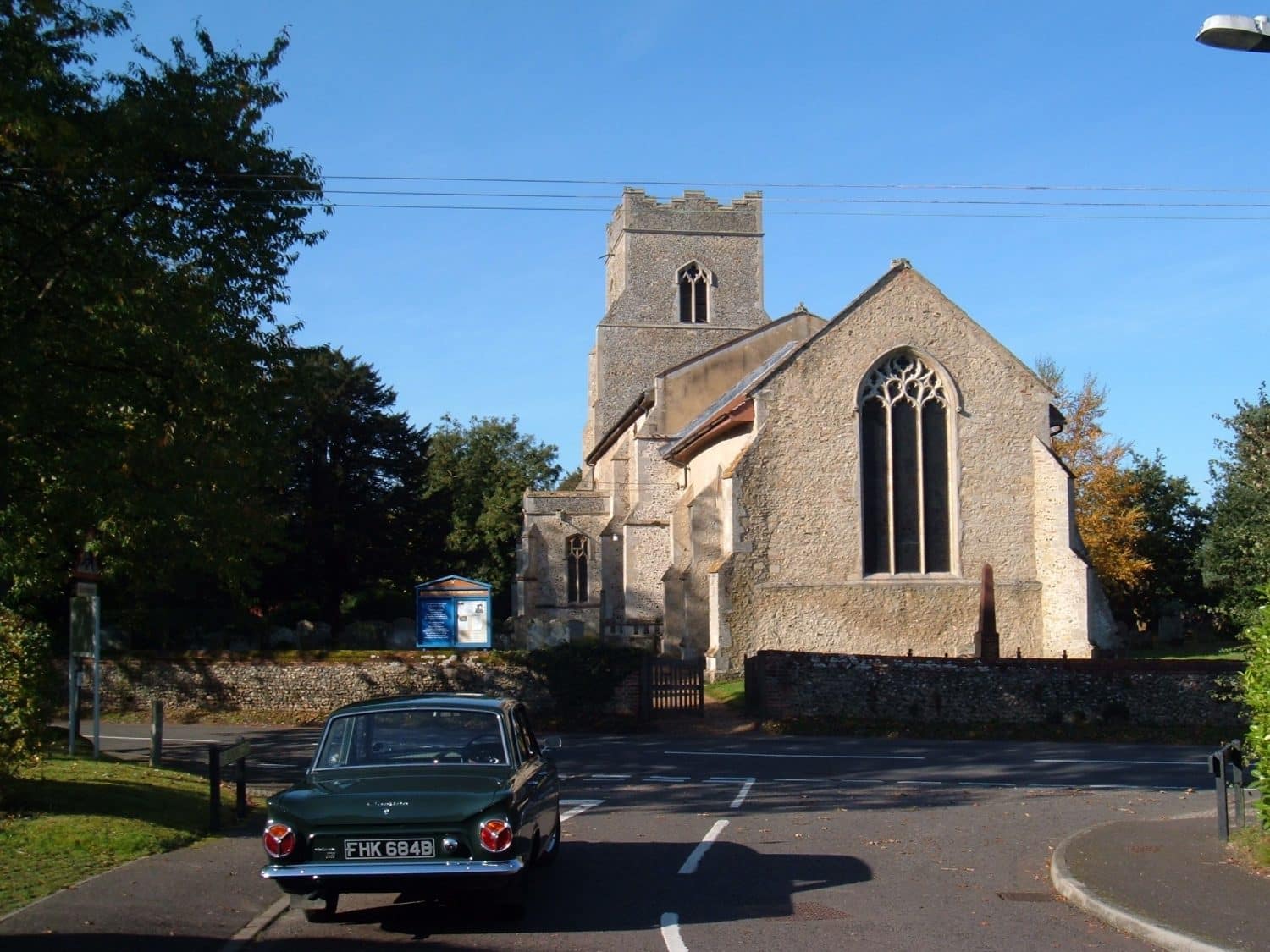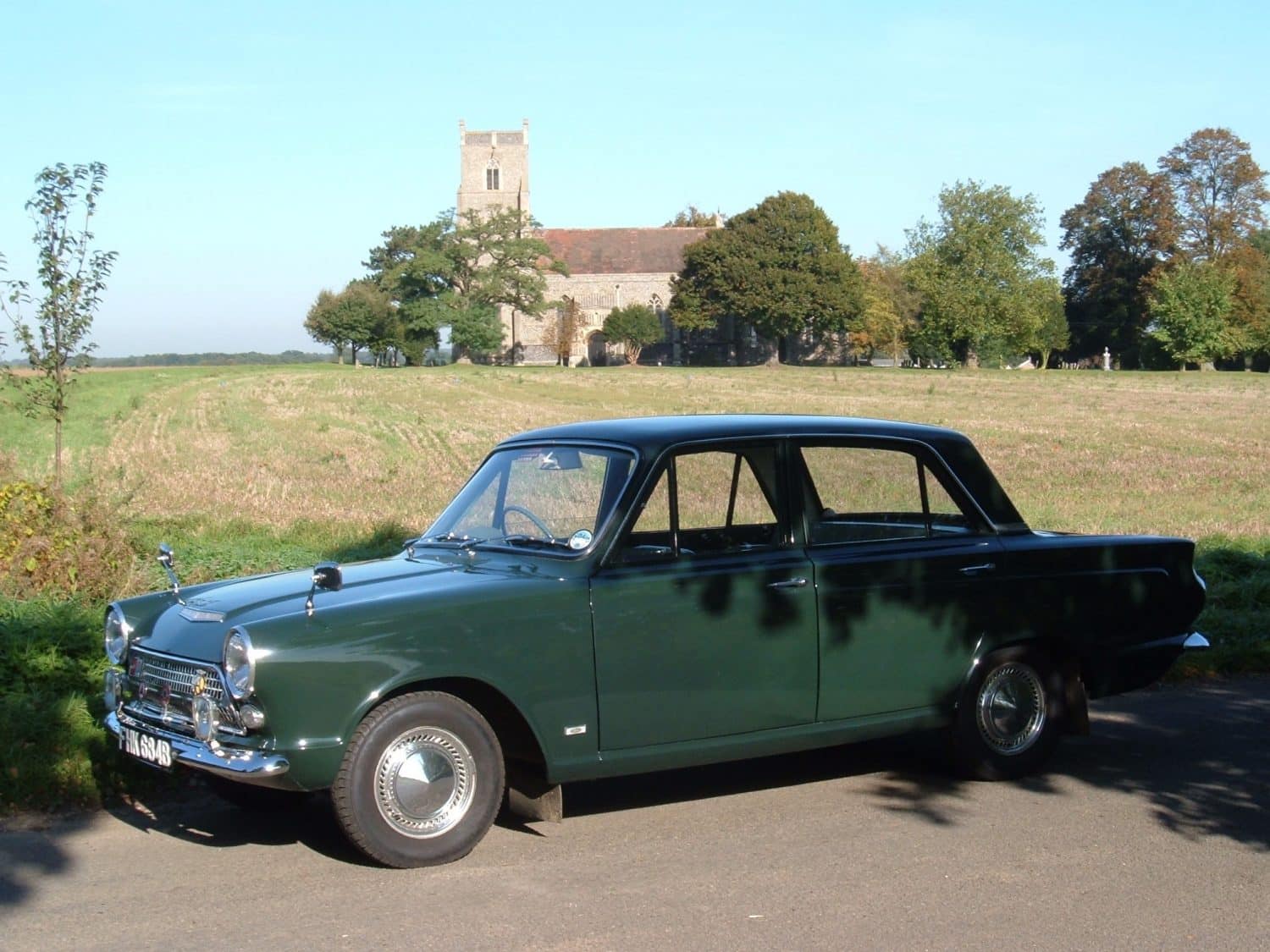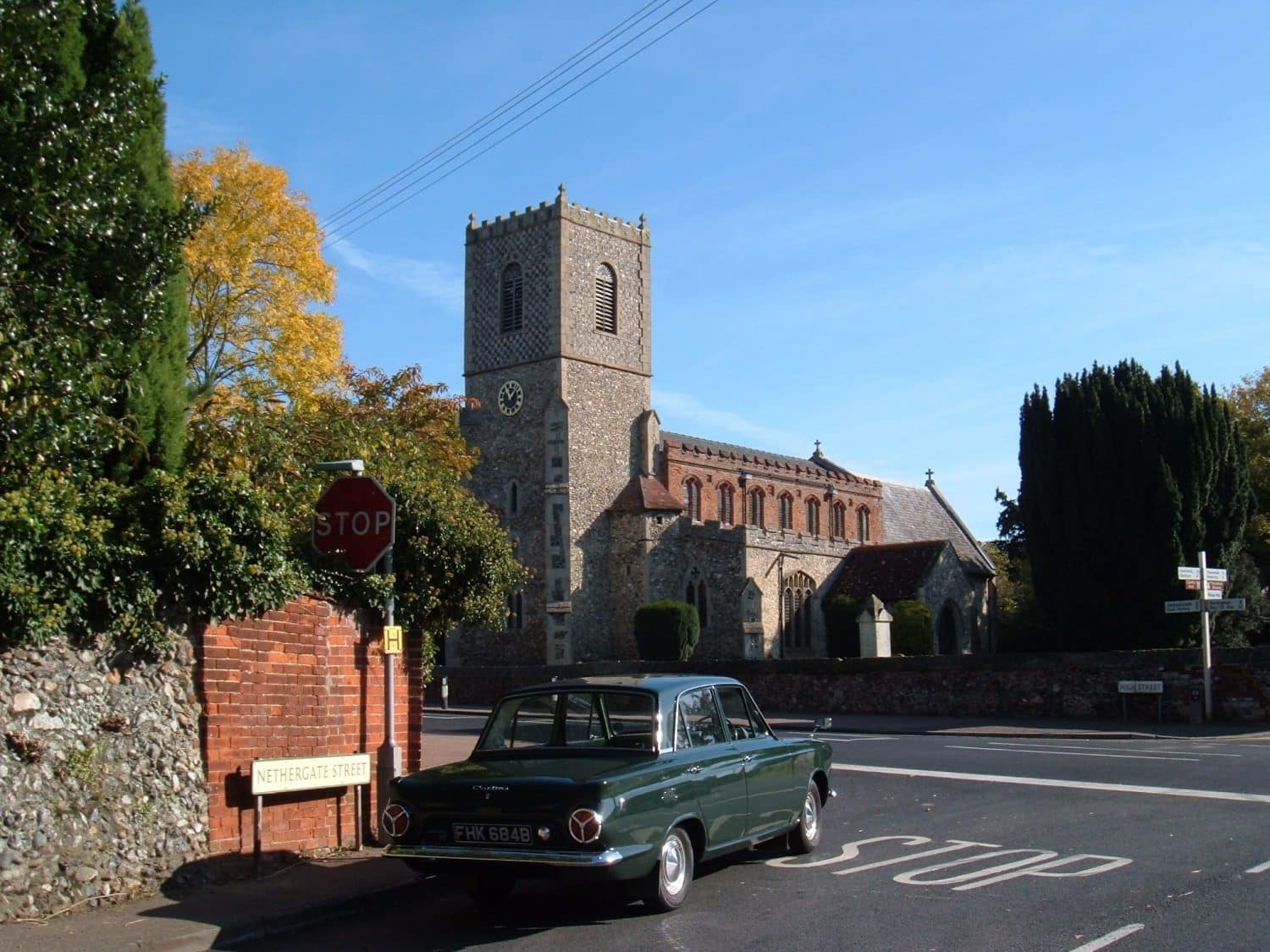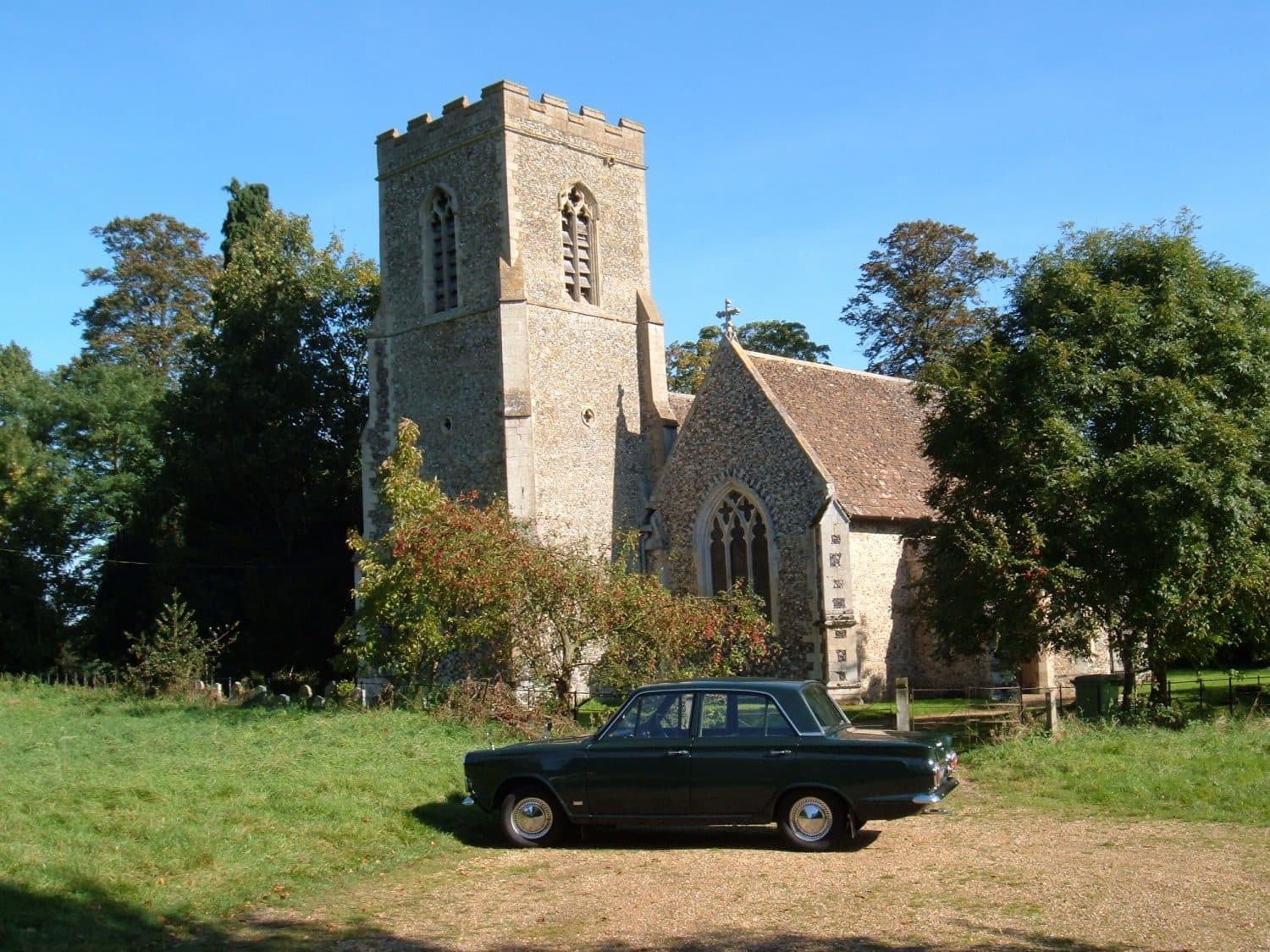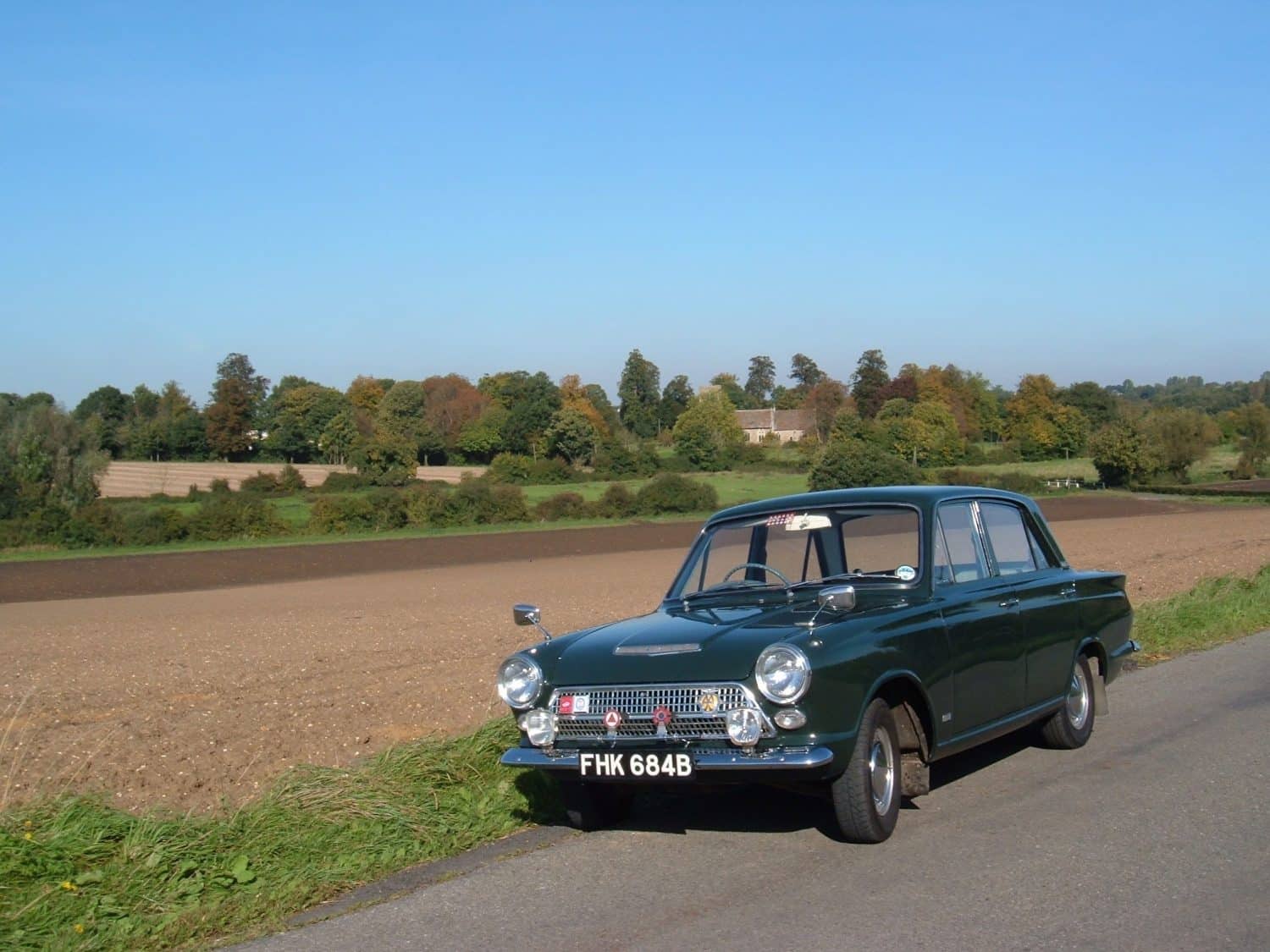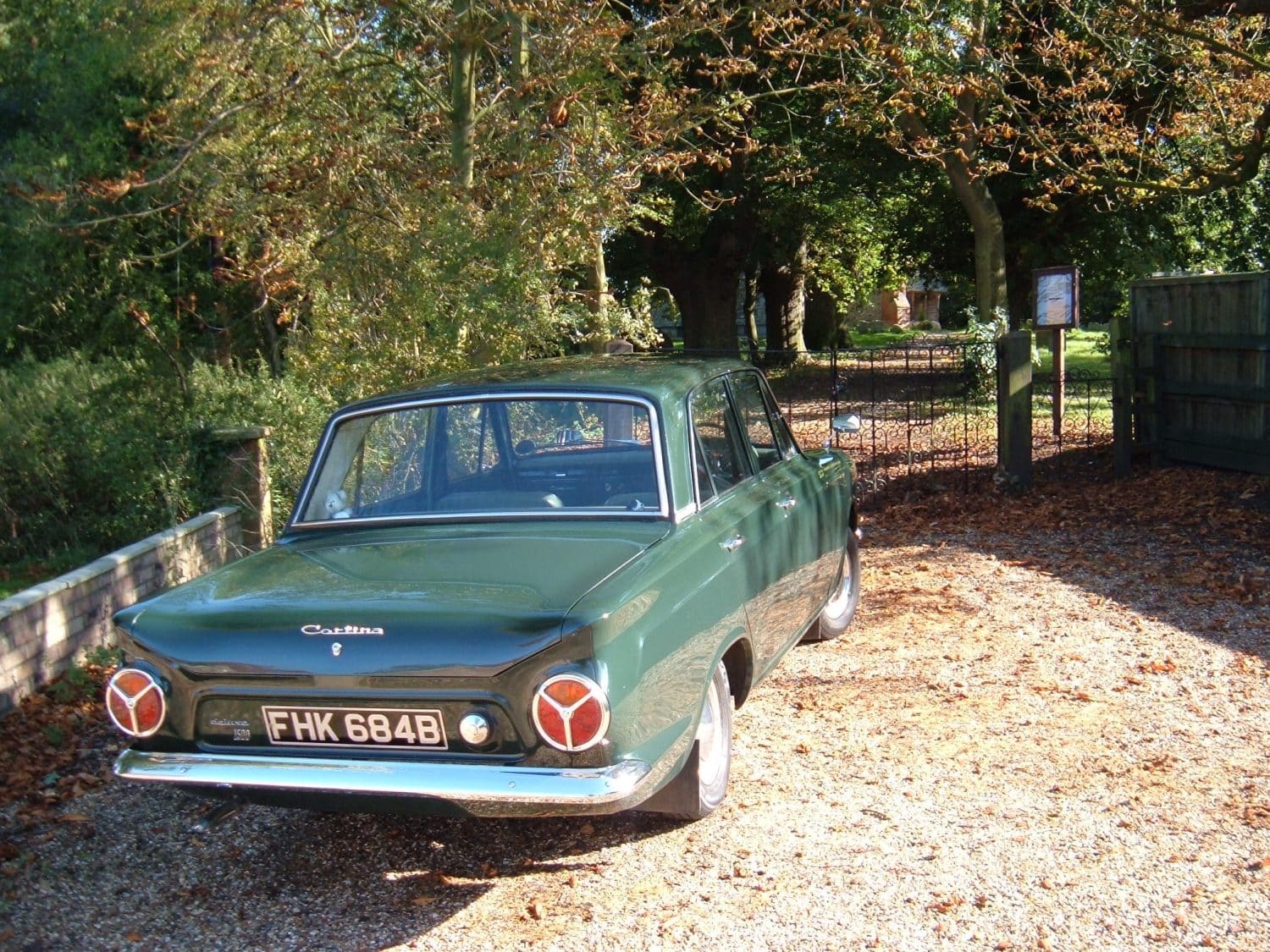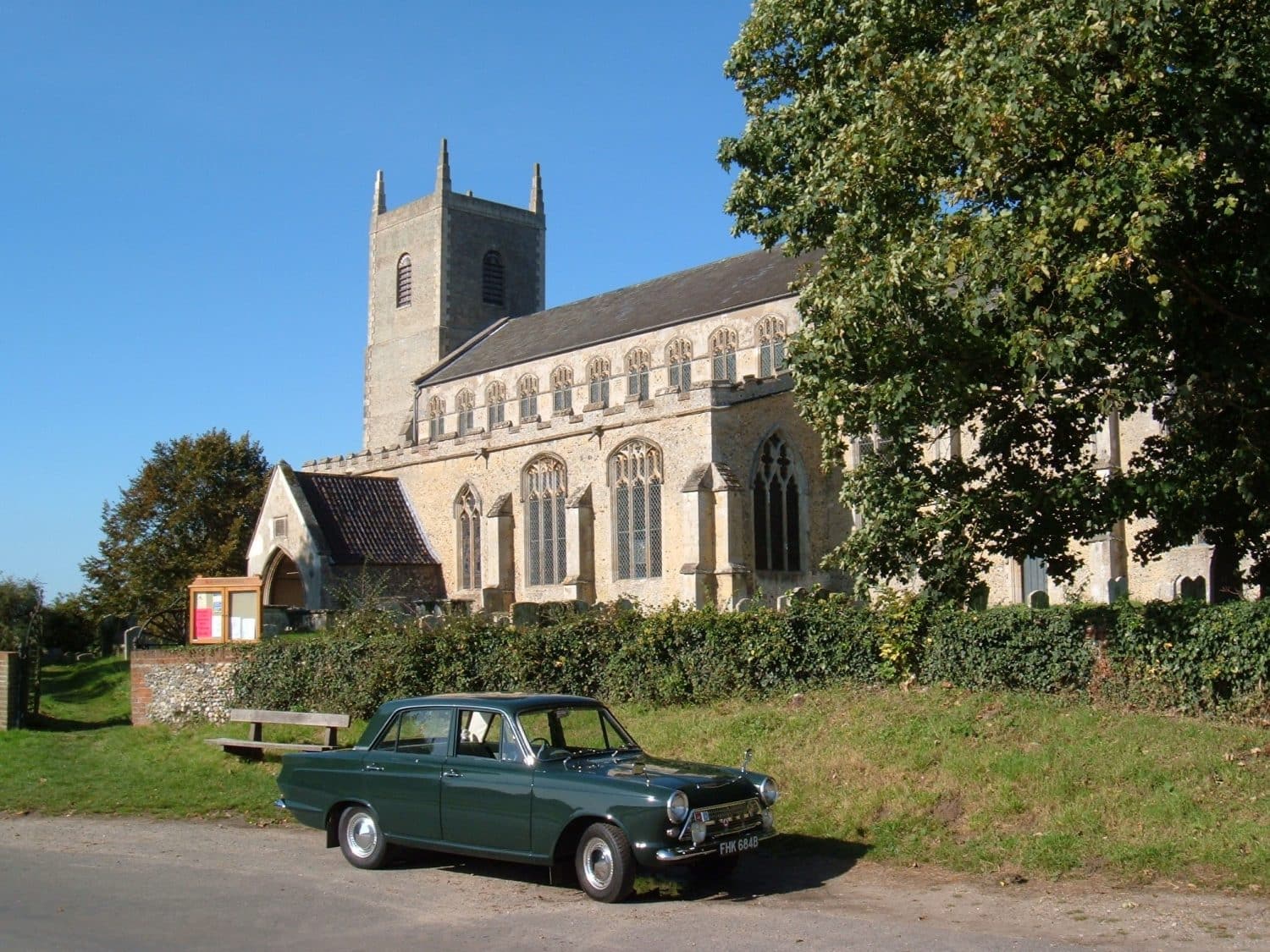[vc_row][vc_column][vc_column_text]During our recent post on our visit to Morston Hall we mentioned meeting Bernard and his wife who had, at home, a Mk1 Ford Cortina.
Bernard told me as a part of his retirement that he travels around Suffolk and visits our churches and photographs his car with the church and writes about the experience.
We are very pleased to be able to share with you their fascinating story. All of the experiences you read of below are from Bernard Butler. Bridge Classic Cars do not claim ownership in any way.[/vc_column_text][/vc_column][/vc_row][vc_row][vc_column][vc_text_separator title=”Suffolk Churches – a series of journeys in a Mk 1 Cortina – by Bernard Butler”][/vc_column][/vc_row][vc_row][vc_column][vc_column_text]It wasn’t until much later in the year that the next journey took place.
Having passed its M.O.T. after a scare with a “lazy” windscreen washer pump, the Cortina did not get another outing until the summer was apparently gone.
On October 8th, 2008, a second consecutive lovely autumn day of clear sunshine was forecast, and so the opportunity was taken to travel far to the west region of Suffolk on a journey which turned out to be rather disappointing.
Not that the weather did not live up to the forecast – it did, but in this part of Suffolk it seems that they lock their churches more than elsewhere, (see comment in Chapter 12), and out of seven buildings visited, only two were open. Sometimes access to a key was advertised, but I do not take up these invitations of finding “Rose Cottage” on the flimsiest of directions, as I simply do not have the time. I have seen directions for the key that say something like “just past Fred’s cottage up the lane”!
However, the journey itself was interesting, with the west of Suffolk just as attractive as other parts, and there were some magnificent buildings to see – if only from the outside!
I decided to make my way to the far extremity of this journey by the fast roads (mainly because I had to go into Diss to fill up with petrol on the way out), and then ramble my way back via the by-ways. Thus we travelled along the A1066 as far as Gasthorpe before turning south.
There were two nearby churches listed on the map, both in old English script. This should have alerted me to the fact that neither was a church any more. I had only intended to visit the one with a tower, but it had been converted into a residence.
On studying Munro Cautley I discovered that it was derelict by 1933, and you might wonder why I don’t read up before setting out! However, I prefer to come upon the churches as “surprises”, and only start to read the entry when I am walking up to the south porch. This is mainly because he often says a Church has nothing of interest, and this would put me off discovering it.
Moving on, I came into the village of Barningham.
This looked interesting and had a very good write-up in Cautley, but alas it was locked. A board outside informed me that it is now shared with the Methodists. A key-holder was named, but I decided to press on as I had seven churches on my list this morning.
A short drive took me to Market Weston church – way out on its own in lovely fields.
Sadly, locked again!
I was beginning to despair of ever seeing the inside of a church this morning, but was rewarded at last at my next stop – Hopton.
I managed to stop on the corner long enough to take the picture but not long enough for any traffic to come along to find me obstructing the junction!
The picture shows the upper clerestory rather well, and I looked forward to an interesting visit. The clerestory is Tudor in origin and made of brick rather than stone.
The roof viewed from inside is not to be missed – it is very beautiful.
Encouraged by this success, I travelled on to Thelnetham and initially could not find the church. I found a building with what looked like a standard east end in flint and stonework, but the abundance of chimneys dotted around the roof made me realise that if it had once been a church it wasn’t any more!
I still do not know what it was, as the real church is but a short distance away and of a greater age, so perhaps it was a glorified rectory?
Have a look on the next page and see what you think!
Realising my error, I studied the Ordnance Survey map more closely, and quickly found the track leading to the real church – again rather away from the houses, except for a few grand ones. This looked very attractive from the outside, and I parked up full of expectation. HOWEVER – locked again!
This was a shame because it looked interesting, but some of the south windows were of clear glass and I was able to look through to the nave, at least.
As I retreated down the drive, the impossible happened – I met a car coming the other way! I had to reverse all the way back to the car parking area, and if I had had sufficient presence of mind I would have asked the lady driver if she had a key. However, on reflection she might only have been visiting a grave. Anyway, I did not bother her – a mistake probably.
Five down with two to go, and it was getting quite warm – about 66 degrees!
As I climbed away from Thelnetham there was a fine view of the church back over the fields.
I continued south through the hamlet of Thorpe Street towards my next stop – Hinderclay.
Here I was spotted arriving, and a lady came over to admire the car. She was about to remove her flowers from the church after Harvest Festival, and we chatted about cars and the lack of unlocked churches in the area. This one was open, but the visit was spoiled somewhat by the loud and continuous noise of an agricultural grain-drying machine in the property next to the church, which she claimed goes on all day and all night in the season!
I could get no closer than the small parking area, and the trees hid much of the view of the church, but you can just make out a small part of the building in the picture on the next page.
Munro Cautley found an artefact in this church that he liked so much he included a picture of it in his book. However, the Bell ringers beer pitcher, dated 1724, is no longer here – it has been moved to the Moyes museum in Bury St. Edmunds, so I may see it on a community bus run one day.
The modern art stained glass windows were a nice feature – obviously not there when Cautley visited, so in a way that was tit for that!
Finally I set out to find the church at Redgrave. From the map I could see that the settlement of Redgrave was now some distance from the church in glorious isolation, and so it was.
The lady at Hinderclay had warned me that it would be shut, and it turned out to be one of the churches now maintained by the Heritage Trust. This meant that it was used as a church on only a handful of occasions in the year. This is a great shame as it is a magnificent building, but once again, being so far from any population, it has lost its congregation.
Here are to be found the monuments to John Holt 1642, the Bacons 1616, and Anne Butts 1609, so I was disappointed not to gain access.
With the weather still glorious, I slipped south-east towards the A143 at Wortham, and home. Altogether nearly four hours had passed.[/vc_column_text][/vc_column][/vc_row][vc_row][vc_column][vc_separator][/vc_column][/vc_row][vc_row][vc_column][vc_column_text]North-west through Eye to Diss, and then west on the A1066 to beyond Garboldisham, turning south towards Gasthorpe and hence over the border from Norfolk back into Suffolk towards Knettishall.
Continue south to Barningham, and then north-east on the B1111, diverting off to visit Market Weston, and then back on the B1111 again to Hopton.
A country road leads eastward to Thelnetham, and a right-turn after the church leads to Hinderclay.
More country roads working north-east via Crackthorn Corner come onto the B113, where a right turn brings us to Redgrave. Bear left in the village going due east to find the disused church.
Finally continue past the church and take the first right – a lovely journey that eventually comes out onto the A143, Diss, and home.
66 Suffolk churches now visited.
[/vc_column_text][/vc_column][/vc_row]

